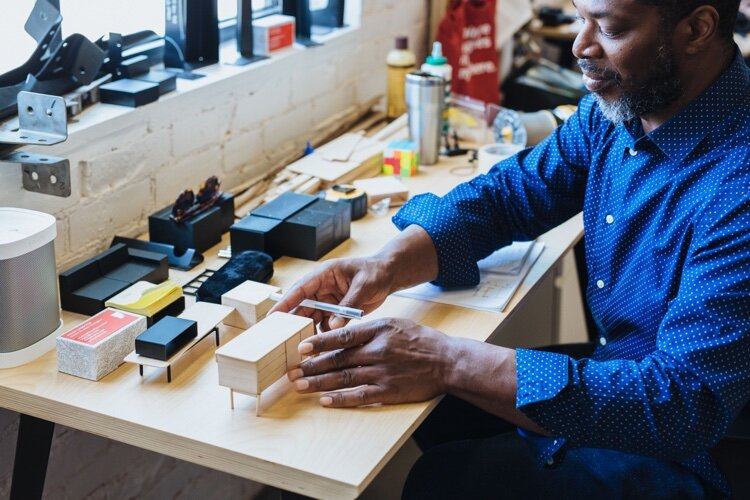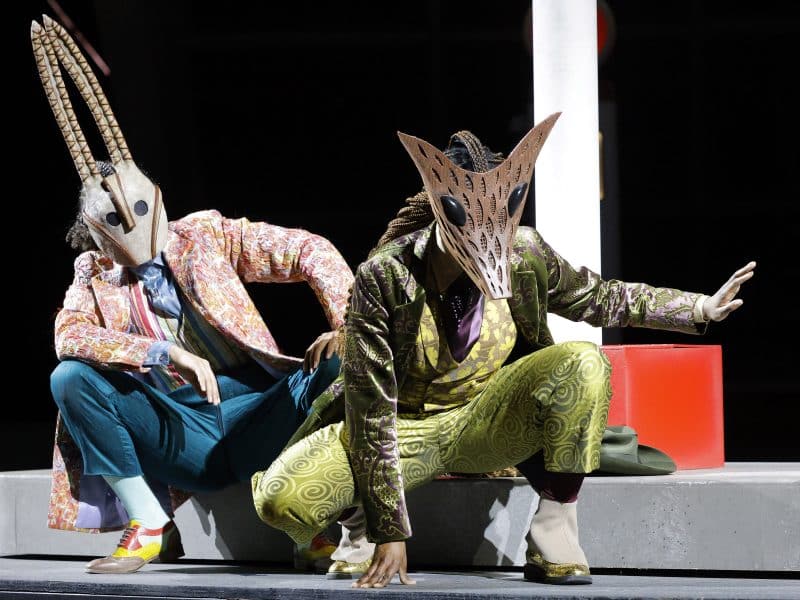Welcome to the #modeldexplorerseries, where you can follow some of Detroit's leaders and icons on Model D's Instagram and see the city through their eyes.
Artist and designer Nina Cho often uses a Korean adage to help frame her work. The adage, as it’s translated into English, says, “It is modest but not humble, and impressive but not extravagant.”
While Cho may use the saying to contextualize her own approach to furniture design, it could just as easily be applied to describe her (relatively) newfound home in Detroit. Born in San Francisco, Cho was raised in Seoul, South Korea, where she studied woodworking and furniture design at Hong-Ik University. Cho moved to Michigan on the strength of the state’s own legacy in furniture design, namely the mid-century furniture masterworks of Charles and Ray Eames. It’s what drew her to the world-renowned Cranbrook Academy of Art in Bloomfield Hills, where she earned an MFA in 3D Design in 2015.
And though the Eames-Cranbrook connection is what initially attracted Cho to Michigan, it’s the city of Detroit that convinced her to stay.
“It’s a city of opportunity, to me. That’s how I characterize Detroit,” says Cho. “The community is very welcoming and really interested in what you’re doing. I think it’s very open to possibilities; that’s how I see Detroit.”
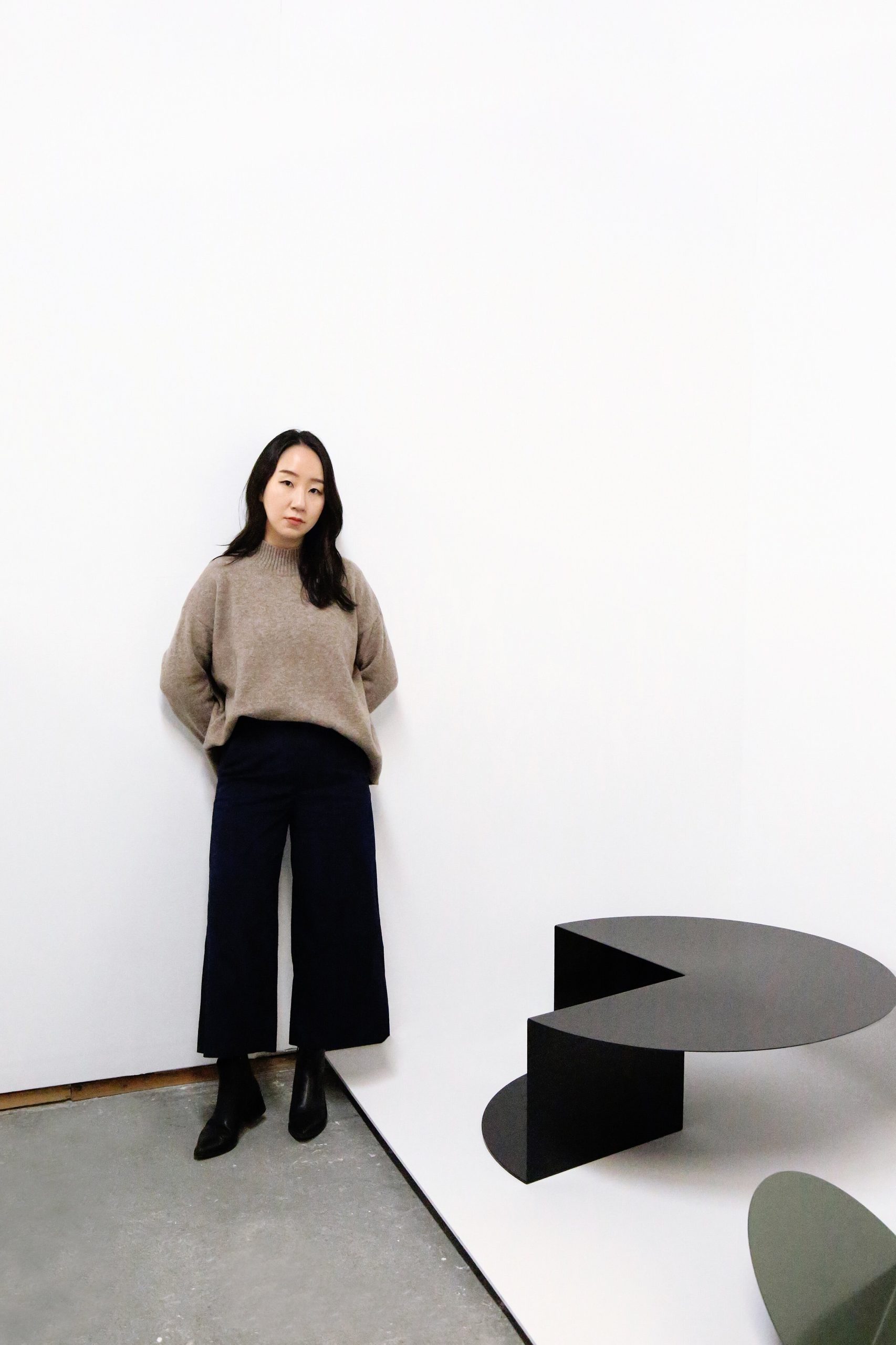
It’s in this city of possibility where Cho works and lives, from her studio in Mexicantown and her apartment in Lafayette Park, the latter of which, it’s likely of no coincidence, is a neighborhood designed by yet another mid-century master designer: architect Mies van der Rohe. Cho’s own approach to furniture design is one that’s informed by a forward-leaning reductive aesthetic — impressive but not extravagant, as the Korean adage goes. She designs both high-end pieces as well as more affordable, accessible furniture lines for the everyday home.
Her work has taken her all over the world, from exhibitions in London and Milan to a residency in Tuscany, Italy. Still, she calls Detroit home. There’s any number of reasons for that; the bonds of community that she’s formed here, the inspiration she draws from the park outside her apartment building. And then there are the practical ones, aspects like access to resources, geographic location, and affordability — things important to just about any line of work.
Detroit’s manufacturing infrastructure provides Cho access to metal fabricators in the city and nearby communities like Hazel Park, a service upon which her work relies. Its geographic location allows Cho to zip over to New York City, a trip she’ll often take by car, a day’s drive. And the relative affordability of Detroit, especially when compared to places like New York and Los Angeles, affords Cho the ability to live and work freely.
“It’s just one of the rare cities that, as an artist or designer, you can actually buy your own studio building still. In New York, as an artist, you could never even imagine buying the studio building, right? Not that I even own the studio building here, but in places like New York, you couldn’t even imagine doing that,” Cho says.
“Here, a lot of artists can own a studio or even a house. I think that’s pretty amazing.”
Finding a supportive ecosystem
Like Cho, Andre Sandifer is a furniture designer who moved to Detroit from elsewhere — although his path is all his own. Born and raised in Grand Rapids, Sandifer earned a Master of Architecture degree from the University of Michigan in 2001, where he’d meet his future wife Abir Ali. The couple became interested in designing and making their own line of handcrafted furniture, eventually opening the Ali Sandifer design studio and workshop. The couple moved to Chicago before settling in Detroit in 2011.
Although no longer married to Ali, the Ali Sandifer studio put Sandifer on the design and furniture-making map. Following the dissolution of their company, Sandifer went back to school before becoming senior product designer at Detroit furniture-maker Floyd. His first product there was a modular table that can be added to the company’s sectional sofa.
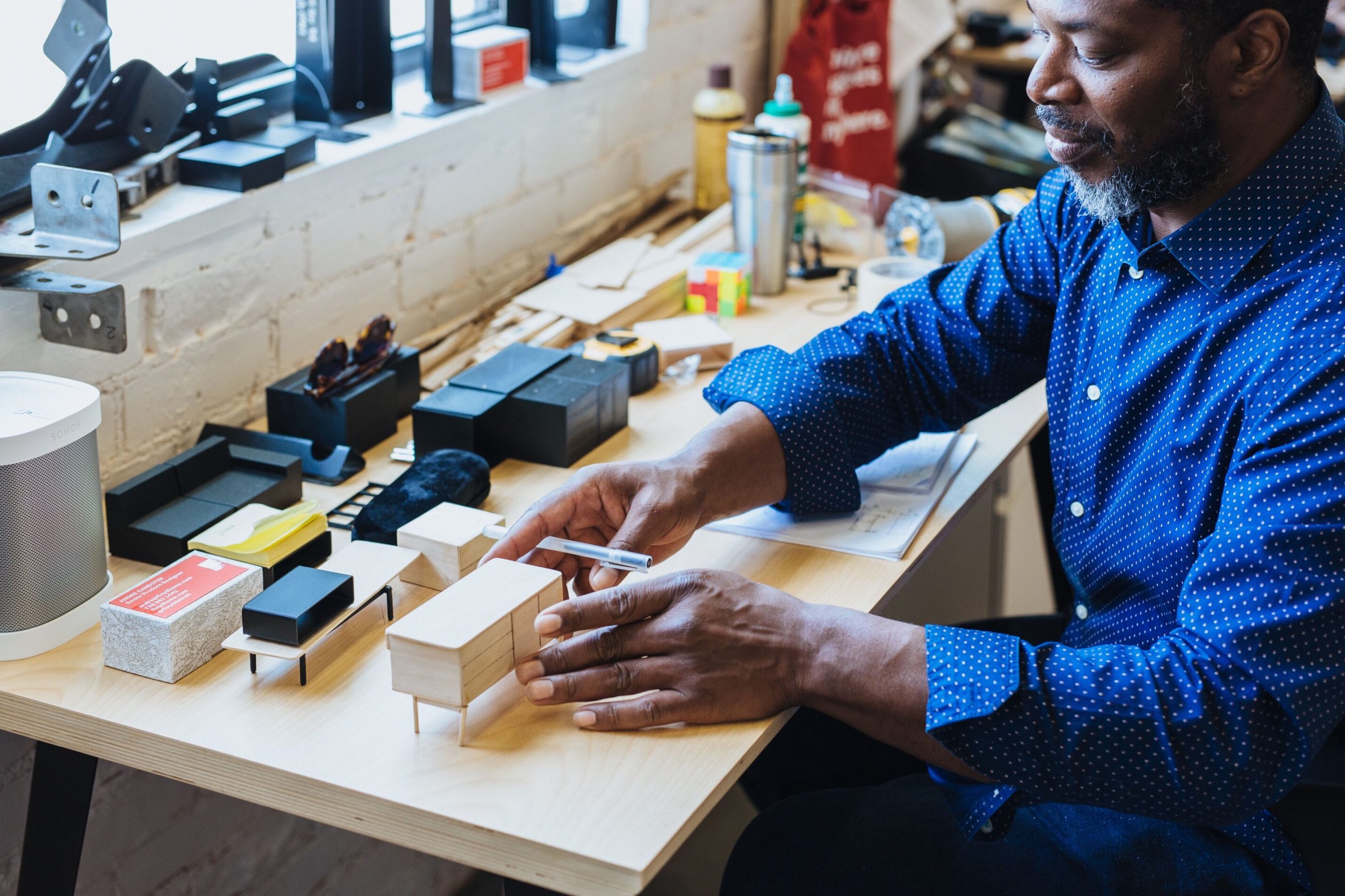
“Floyd’s design principles aligned with my previous work. What I was doing was about sustainability, a sense of longevity — handmade pieces that hopefully will last for generations,” Sandifer says. Although Sandifer’s previous work was handmade and Floyd operates on a much bigger, mass-produced scale, much of the thought that guides the two companies dovetail together.
“Floyd definitely aligns with my design principles and definitely longevity, but also in being mindful of the materials that I use, mindful of how customers receive the products, and how much of a role the customer plays in the design process. I like to say that my design process is about human-centric qualities, like how people interact with the piece, how they use it and how does that piece help or improve their living environment.”
When Sandifer first moved to Detroit, he found himself immersed in the city’s supportive ecosystem of artists, designers, creatives, makers, and otherwise. Ali Sandifer set up shop in the Russell Industrial Center, a sprawling complex of seven industrial buildings teeming with makers of all stripes, from furniture-makers to glassblowers, a haven for artists, musicians, and more.
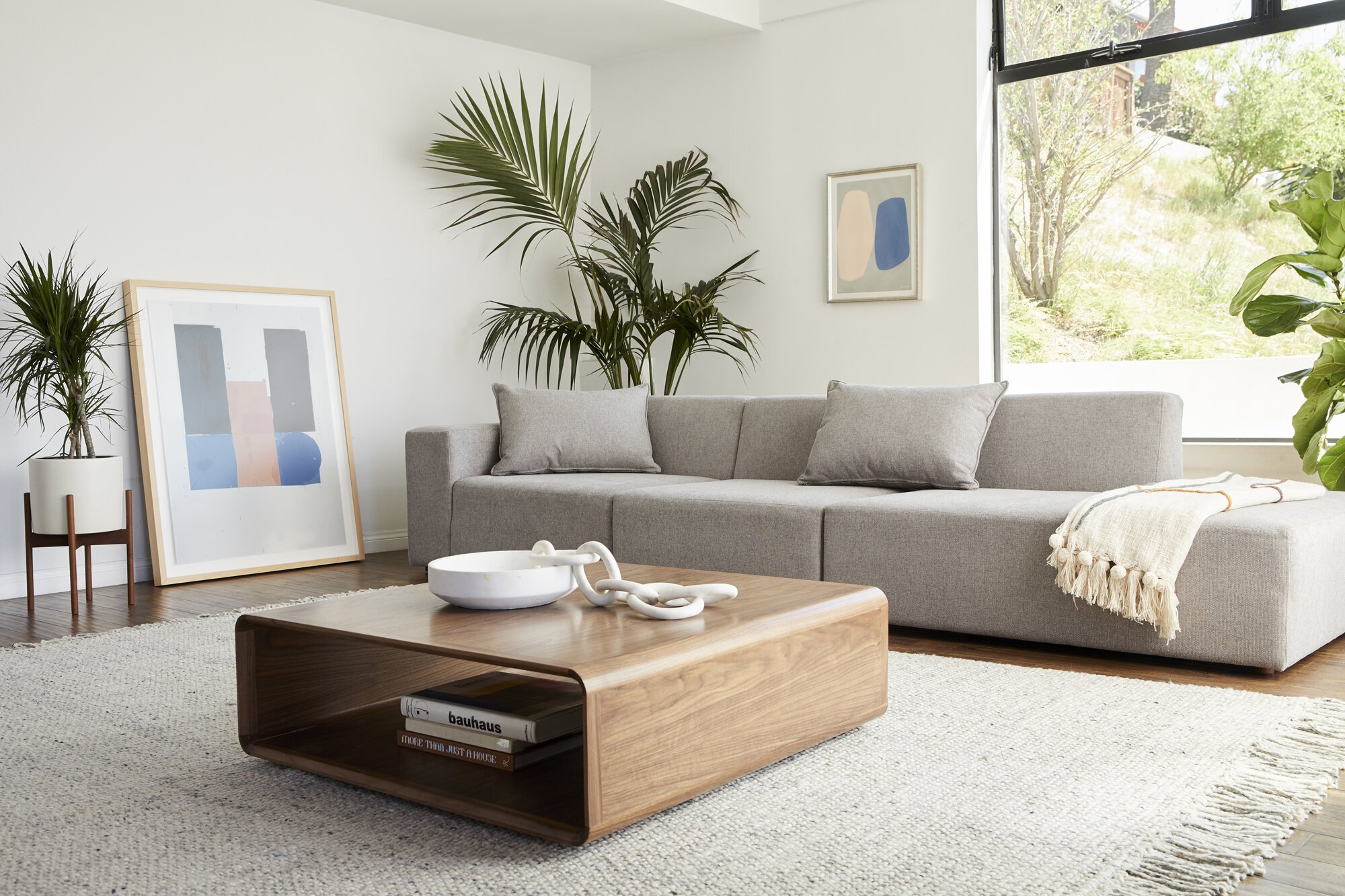
It’s an attitude
A father of three boys, Sandifer’s oldest enrolled in the Henry Ford Academy: School for Creative Studies when they first moved to Detroit. A public charter school with a heavy focus on the arts, the Henry Ford Academy is located in the A. Alfred Taubman Center for Design Education, an extension of the College for Creative Studies (CCS) campus. It’s a building teeming with creativity, not only housing the academy and CCS, but also Shinola, Kresge Arts in Detroit, and Design Core Detroit.
It’s there where Sandifer says he began to understand Detroit as a design community.
“For us, it was important to find a place where our son had that sort of artistic outlet. But then being surrounded by businesses and people that were advocates for the creative process, is where that (understanding) started,” says Sandifer. “And then also when I had my own studio in the Russell Industrial. I mean, they have creative people ranging from glassblowers to people doing handmade furniture. A lot of different creative worlds met there.”
Being part of Detroit’s creative eco-system has only further inspired Sandifer, he says. It’s that oft-referenced “spirit of innovation” people talk about when they talk about Detroit, a phrase often used by local tourism boards but one that talented transplants like Nina Cho and Andre Sandifer have found to be real, and very much so.
It’s an attitude as much as it is anything else, Sandifer says.
“Being raised in a very conservative town like Grand Rapids, you know, and then being a Black male coming to a place where it’s predominantly Black, that itself was exciting. I see more of me and I see more of me in the creative world. I’m seeing people making similar things going through similar struggles, and especially here in Detroit — but I’m also seeing them persevere,” Sandifer says.
“I think Detroit has this reputation that people here are strong; you persevere and you get through stuff. I think that attitude is definitely heavily rooted here.”
